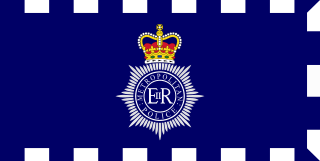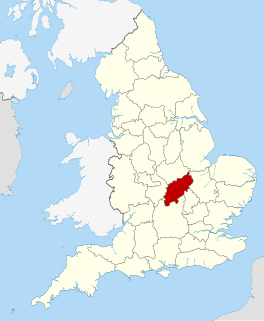A constable is a person holding a particular office, most commonly in criminal law enforcement. The office of constable can vary significantly in different jurisdictions. A constable is commonly the rank of an officer within the police. Other people may be granted powers of a constable without holding this title.

The Metropolitan Police Service (MPS), formerly and still commonly known as the Metropolitan Police, is the territorial police force responsible for the prevention of crime and law enforcement in Greater London. In addition, the Met Police is also responsible for some specialised matters throughout the United Kingdom; these responsibilities include co-ordinating and leading national counter-terrorism measures and the personal safety of specific individuals, such as the Monarch and other members of the Royal Family, members of the Government, and other officials.
Chief constable is the rank used by the chief police officer of every territorial police force in the United Kingdom except for the City of London Police and the Metropolitan Police, as well as the chief officers of the three 'special' national police forces, the British Transport Police, Ministry of Defence Police, and Civil Nuclear Constabulary. The title is also held by the chief officers of the principal Crown Dependency police forces, the Isle of Man Constabulary, States of Guernsey Police Service, and States of Jersey Police. The title was also held, ex officio, by the president of the Association of Chief Police Officers under the Police Reform Act 2002. It was also the title of the chief officer of the Royal Parks Constabulary until this agency was disbanded in 2004.
Most of the police forces of the United Kingdom use a standardised set of ranks, with a slight variation in the most senior ranks for the Metropolitan Police and City of London Police. Most of the British police ranks that exist today were chosen by Home Secretary Sir Robert Peel, the founder of the Metropolitan Police, enacted under the Metropolitan Police Act 1829. The ranks at that time were deliberately chosen so that they did not correspond with military ranking, because of fears of a paramilitary force.

The Civil Nuclear Constabulary (CNC) is a special police force responsible for providing law enforcement and security at any relevant nuclear site and for security of nuclear materials in transit within the United Kingdom. The force has over 1,500 police officers and support staff. Officers within the force are authorised firearms officers, due to the nature of the industry the force protects.

Nottinghamshire Police is the territorial police force responsible for policing the shire county of Nottinghamshire and the unitary authority of Nottingham in the East Midlands of England. The area has a population of just over 1 million.

Northamptonshire Police is the territorial police force responsible for policing the county of Northamptonshire in the East Midlands of England, in the United Kingdom.

The Isle of Man Constabulary is the national police service of the Isle of Man, an island of 80,000 inhabitants, situated approximately equidistant from Northern Ireland, Wales, Scotland and England.
Falmouth Docks Police is non-Home Office ports police force whose primary role is security of Falmouth Docks. As of 2007 the constabulary numbered just four constables.

The Bermuda Police Service is the law enforcement agency of the British Overseas Territory of Bermuda. It is responsible for policing the entire archipelago, including incorporated municipalities, and the surrounding waters. It is part of, and entirely funded by, the Government of Bermuda. Like the Royal Bermuda Regiment, it is under the nominal control of the territory's Governor and Commander in Chief, although, for day-to-day purposes, control is delegated to a minister of the local government. It was created in 1879, as Bermuda's first professional police service. In organisation, operation, and dress, it was created and has developed in line with the patterns established by British police services, such as the City of Glasgow Police, and the Metropolitan Police Service.

The Admiralty Constabulary was a police force in the United Kingdom formed under the Special Constables Act 1923 which existed from 1949 to 1971.

The Airport Security Police is the police force of the Bermuda International Airport.
The Ministry of Defence Police (MDP) in the United Kingdom can trace its origins back to 1686, and has gone through a number of evolutions over the centuries to achieve its present-day form. Until late 1965, the Royal Navy, British Army and Royal Air Force were controlled by separate departments: the Board of Admiralty, the Army Board and the Air Ministry respectively, each had its own Cabinet Minister. In that year it was decided that the three services should be placed under the control of one Minister of State for Defence, and the present Ministry of Defence was formed.
A special constable or special police constable is generally an auxiliary or part-time law enforcement officer.

The Ministry of Defence Police (MDP) is a civilian special police force which is part of the United Kingdom's Ministry of Defence. The MDP's primary responsibilities are to provide armed security and counter terrorism services to designated high-risk areas, as well as uniformed policing and limited investigative services to Ministry of Defence property, personnel, and installations throughout the United Kingdom. The MDP are not military police and should not be confused with the Royal Military Police or any other British Service Police. Service personnel often refer to the MDP by the nickname "MOD plod".
Liverpool Parks Police was a police force maintained by the Corporation of Liverpool to police the parks and open spaces owned by the city. The first record of "park constables" in Liverpool is from 1832, although members of the force were not sworn in as constables in their own right until 1882. The force was disbanded in 1972.
Airport policing in the United Kingdom has taken many forms since the rise of scheduled airline services in the post-war period. Policing at major civilian airports was the responsibility of specialist constabularies operated by three central government departments until 1974, when the rise in international terrorism saw armed police from territorial police forces deployed to major airports under the provisions of the Policing of Airports Act. As more minor airports grew in size, they too switched to armed police provided by local police forces. However, the funding agreements for the provision of such services varied wildly from airport to airport, leading to disagreements between airport operators and chief constables. A new regime, the Airport Security Planning Framework, came into force in January 2010, and brought airport operators, airlines and police forces together to develop joint security and policing plans for all passenger airports.

The Royal Marine Police (RMP) was a police force in the United Kingdom formed under the Special Constables Act 1923 which existed from 1934 to 1949.
Liverpool Airport Police is a defunct police force of the United Kingdom, formerly responsible for policing Liverpool John Lennon Airport, in Liverpool, England.









